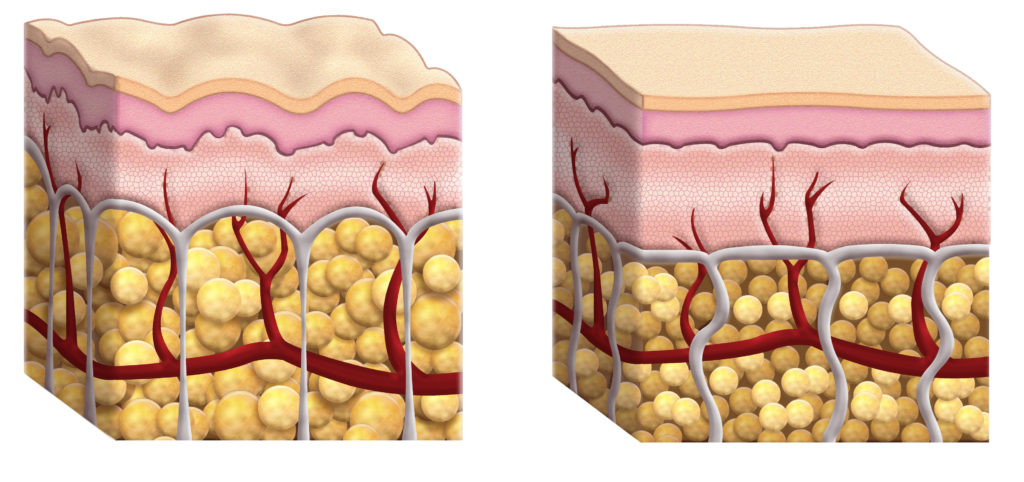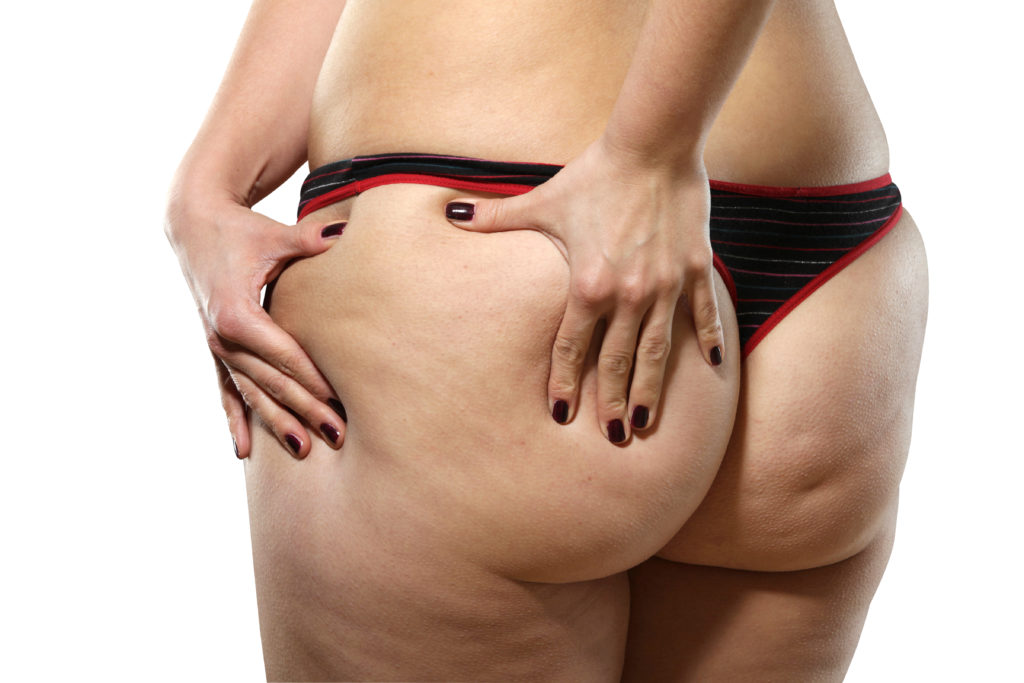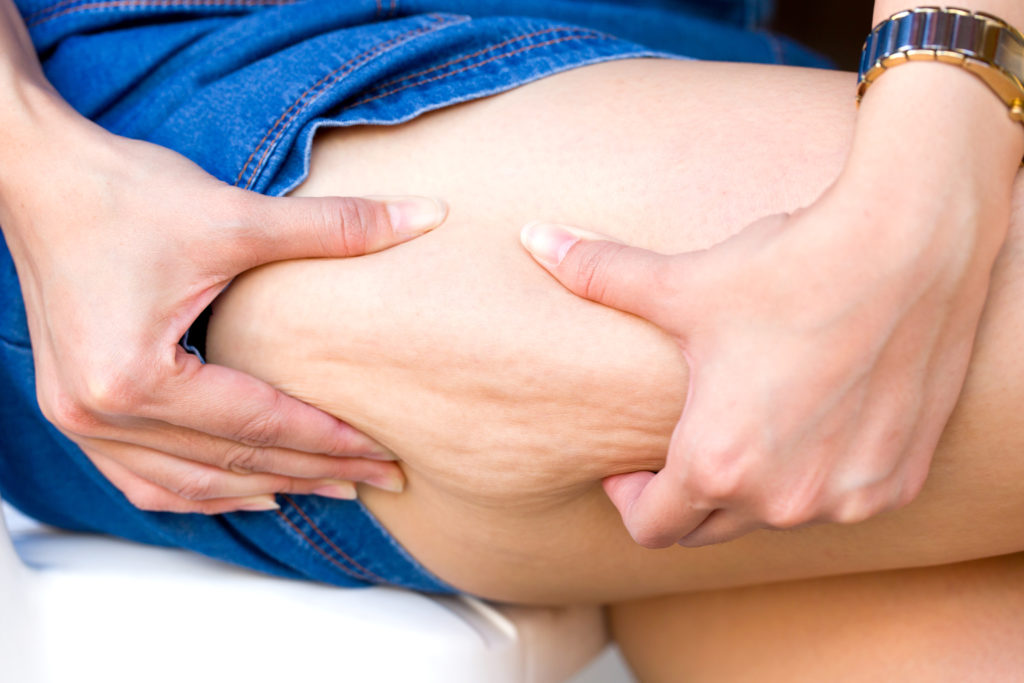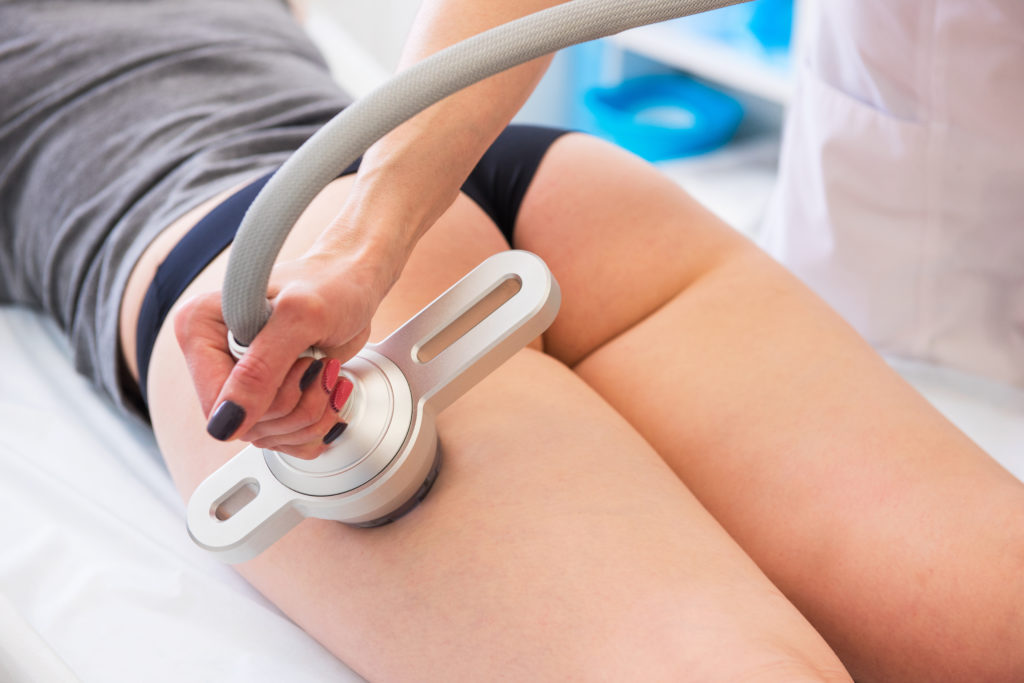We’re all about body positivity and loving the skin that you’re in. However, we know that a little thing called cellulite can make even the most confident people a little self conscious at times. Just know that this uneven and dimpled skin is normal and you’re not the only one that struggles with it — it affects almost 90% of women, and 10% of men. The good news? It’s not dangerous, and it isn’t generally symptomatic of any serious diseases.
Because cellulite can take a toll on self esteem — wanting to know if there are remedies out there that can actually get rid of it, is so valid. We’re here to give you answers and break down what cellulite actually is, why we get it, and how you can prevent it
What is cellulite?
Adiposis edematosa, commonly known as cellulite, gives the skin a lumpy appearance in areas where there are underlying fat deposits. Scientists call cellulite an architectural disorder of human adipose tissue.
Come again? Simply put, the way your fat tissue is structured affects the topography (aka the surface) of your skin. Cellulite appears as patches of skin with roughness and pastiness, with reduced elasticity and a lower temperature. Women tend to get cellulite in areas that store more fat, i.e., your butt, thighs, legs, and abdomen.
What causes cellulite?
Cellulite starts in the hypodermis, which is the layer of subcutaneous fat that’s directly under your skin. This layer of protection connects your skin to your muscle and provides cushioning and insulation. Inside of the hypodermis are layers of fat, which are connected vertically with honeycombed bands of collagen, called septae.
Between those bands, fat cells reside and grow — mostly as a result of poor diet, bad circulation, or hormonal changes. These factors cause your septae to break down, making the fat-to-skin connection less effective. When the septa strain to hold the layers together, but expanding fat cells are pushing directly on the dermis, it creates tension, which leaves that dimpling look.

Your level of cellulite is impacted by genetics. White women get it more than black and Asian women; some families have it more than others. Men also get cellulite, but much less often than women, and it typically appears around the waist and abdomen.
Hormones also influence cellulite. Changes in estrogen production can result in poor circulation, a decrease in collagen production, and the breakdown of connective tissues. Estrogen also produces fat, so more estrogen results in larger fat cells. Pregnancy and some medical issues may exacerbate the issue.
Cellulite is categorized into three grades, based on severity.
Grade I: Dimpling is visible if you apply pressure
Grade II: Dimpling is visible while you are standing
Grade III: Dimpling is visible even when you’re lying down
So can I get rid of my cellulite?
There’s no across the board consensus on treatment protocols for cellulite. But there are many ways to mildly reduce its appearance — at least temporarily — both at home and in your doctor’s office.
Medical professionals generally agree that with treatment, cellulite can be improved, but improvement varies widely based on the patient and treatment type. Some say improvement by one grade is possible, but it’s certainly circumstantial.
The best results, according to research studies, in tackling cellulite have been found with acoustic wave therapy, laser, subcision, vacuum assisted precise tissue release, exercise, and weight loss.
At Home: Diet, Exercise, and Lifestyle
While nothing is guaranteed, making lifestyle changes (namely in your diet and exercise habits) can make a difference in cellulite appearance.
High-carbohydrate diets lead to increased insulin levels. This, in turn, results in increased fat production and, therefore, an increased appearance of cellulite. In other words, carbs don’t necessarily directly = cellulite, but they don’t help either.
Exercise helps decrease the appearance of cellulite by building muscle underneath the skin and decreasing the body’s fat.
However cellulite, unlike fat, doesn’t dissolve when you change your diet, so you may find that even though you lose weight, you still have or get cellulite.
Cellulite is made worse by restricted blood flow — wearing tight clothing, smoking and standing for too long all restrict blood flow, which may make cellulite appear worse.
At Home: Massage, Dry Rubbing, and Topical Creams
Because rubbing your skin improves blood flow and removes excess liquid (remember that rumor about body brushing you heard?), all-over exfoliation and massage may be temporary fixes for cellulite. Studies show that therapies based just on massage and suction techniques do not have long term or lasting effects.
Lotions and creams with caffeine can help tighten the skin, but research hasn’t shown any lasting effects, either. Retinol-based products (0.3% or higher), have been proven scientifically to improve the texture of your skin but these products ultimately target only the surface of your skin, not the structure underneath.
In the Office: Infrared Light, Acoustic Waves, and Lasers
These require a physician, nurse practitioner, trained esthetician, or other health professional to perform, and must be done in-office. Below are explanations of some available therapies that have been shown to modify the appearance of cellulite.
Radiofrequency devices
Non-invasive, heat-imparting devices use infrared light, bipolar and unipolar radio frequencies, suction, and massage, to destroy cells and tighten skin. VelaSmooth, VelaShape, and Vanquish are all examples of these devices. Over several sessions, they can increase collagen and elasticity and thicken the dermis of the skin. Maintenance may be required to keep results longer than 1-3 months.
Radial shockwave treatment (Extracorporeal, Acoustic)
These newer, FDA-approved products apply high-energy shockwaves to the affected area. The acoustic waves are believed to break down connective tissue, and can stimulate circulation and fat cell metabolism while enhancing the exchange of blood lipids. Zwave is the most common radial shockwave treatment on the market, and multiple sessions and maintenance may be required.
Laser-Assisted Liposuction
Traditional liposuction has been known to increase skin dimpling, possibly because targeted fat is close to the skin’s surface. Less invasive, laser-assisted liposuction — like SmartLipo — uses a laser that melts and breaks up pockets of fat, and loosens the septae. It’s not necessarily designed for cellulite, though.
Laser-Assisted Cellulite Treatment
An FDA-approved, minimally-invasive laser treatment called Cellulaze specifically targets cellulite. It uses a device that’s inserted under the skin to deliver heat, which then releases the septae and increases the thickness of the dermis. The laser also stimulates collagen, and it’s advertised to have results that may last a year or longer after one session.
Subcision and/or Vacuum Assisted Precise Tissue Release
Known as Cellfina, vacuum assisted tissue release and subcision are both procedures which involve using needles or blades inserted just under the surface of the skin. These tools are used to cut the bands that cause the appearance of cellulite. These procedures are typically effective for 2-3 years.
The bottom line on cellulite?
Unfortunately, there’s no sure cure. However, these in-office treatments and a switch in your diet and exercise habits can definitely help improve the appearance of it. Just be patient with your body and know that treatments will require consultations and some recovery time.
Dr. Ashley Steffens, a dermatology resident at Southern Illinois University School of Medicine (SIU), helped contribute to the accuracy of this story.







